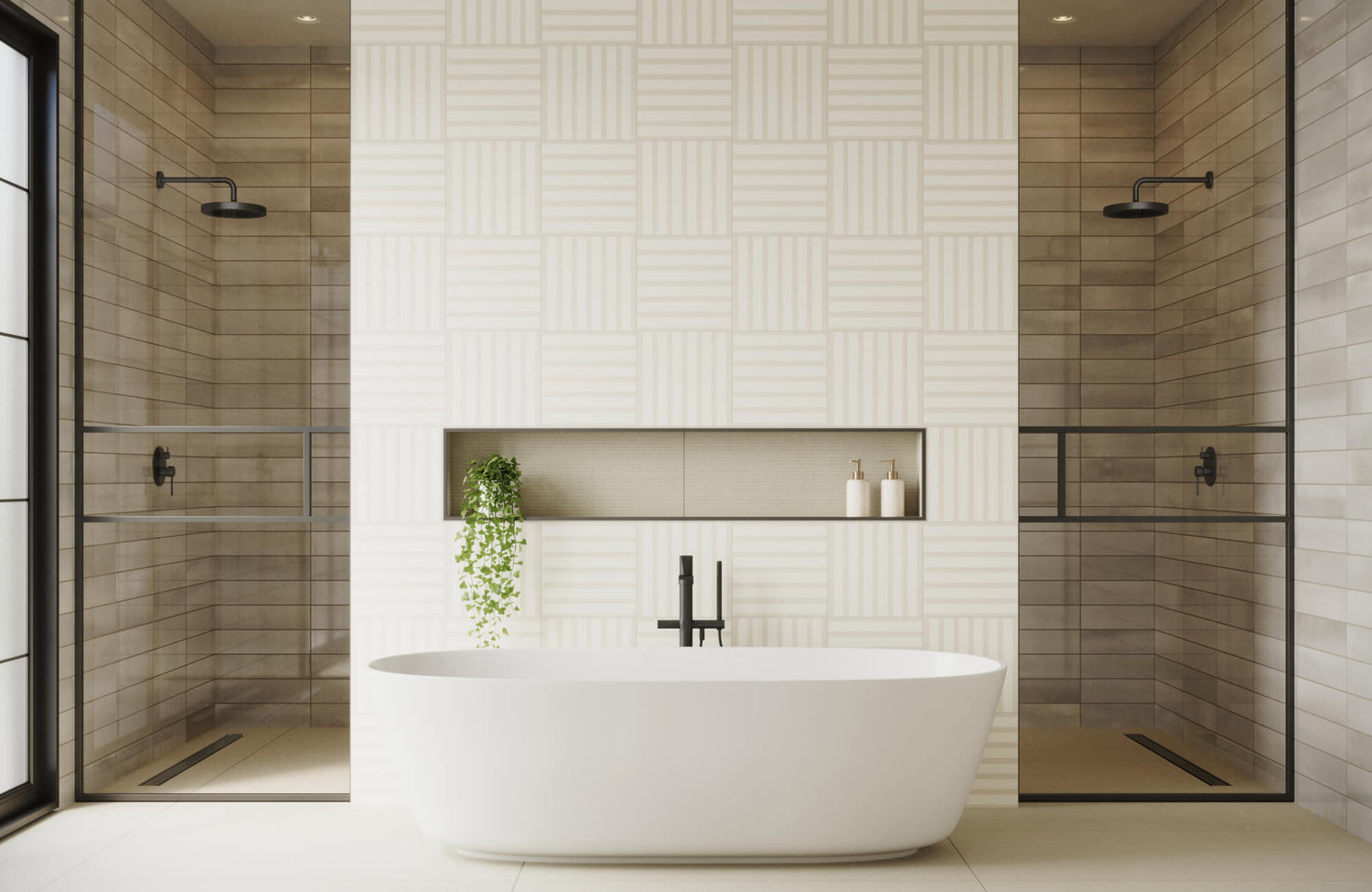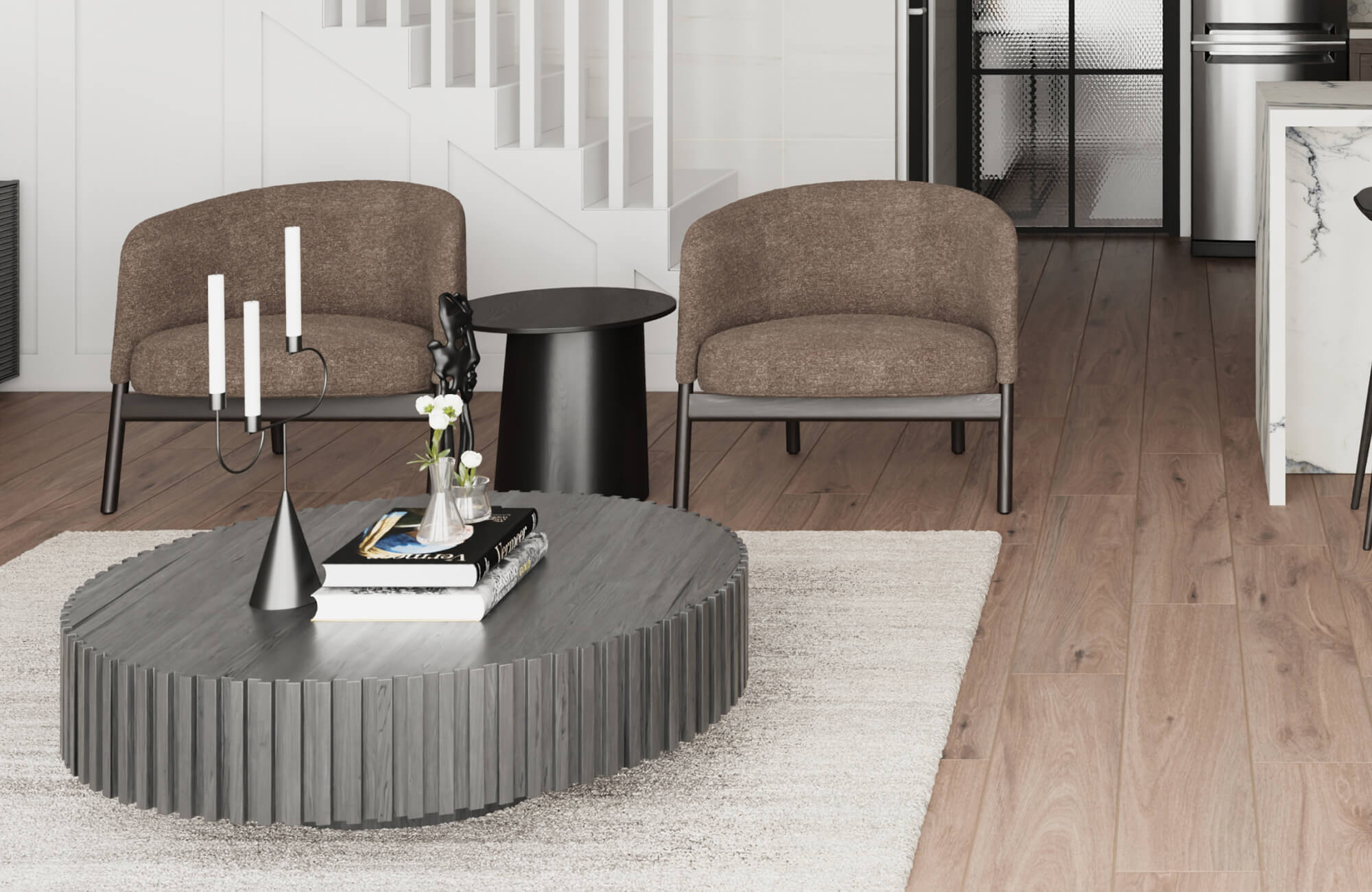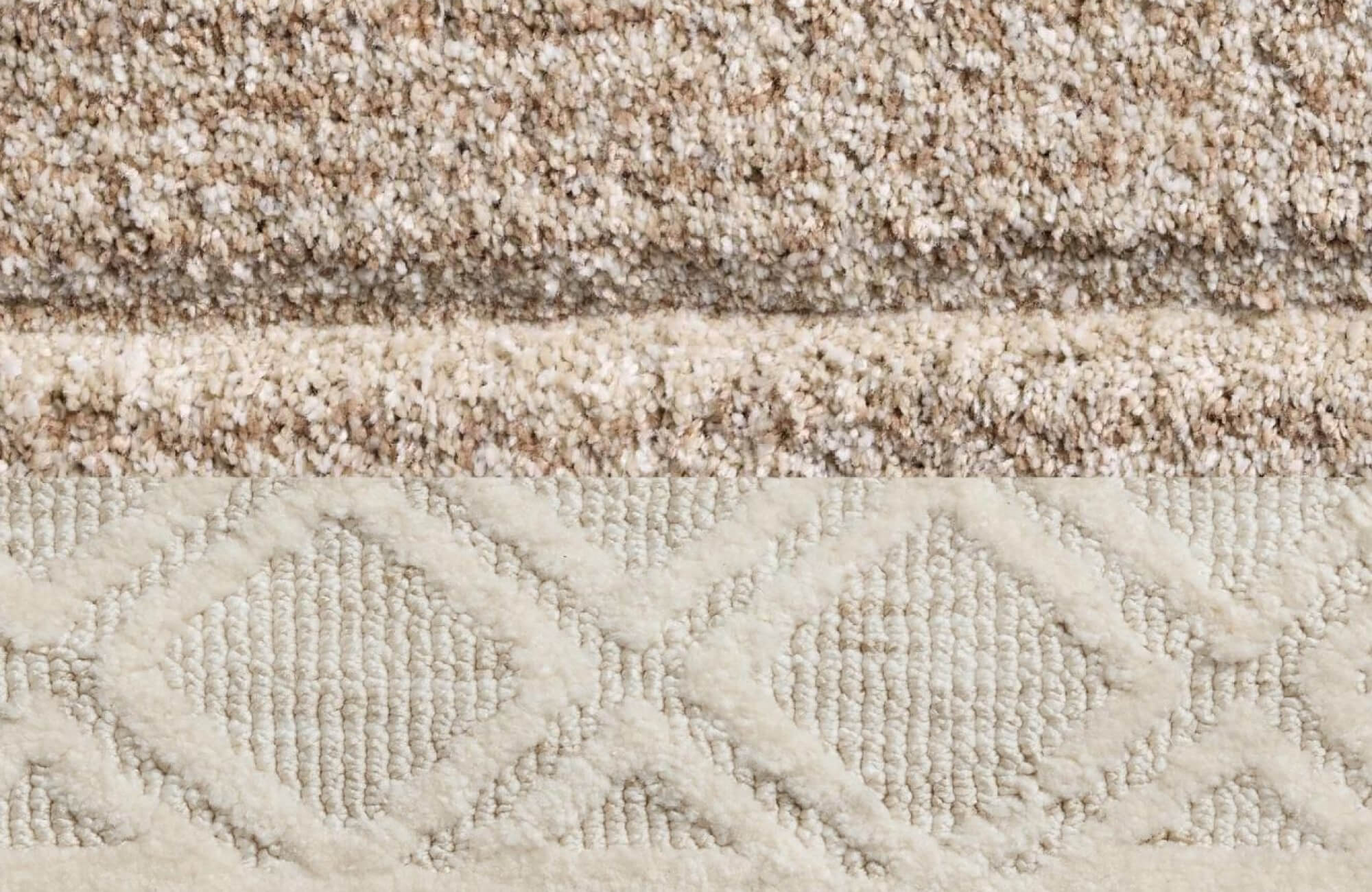Decorative tiles can completely change the look and feel of a bathroom, adding charm, color, and personality in ways that paint or fixtures simply can’t. But deciding where to place them isn’t just about what looks good; it’s also about what makes the space feel balanced, comfortable, and unique to you.
From bold patterns to subtle textures, the right tile in the right spot can make a small bathroom feel bigger or turn a simple design into something special. Whether you're planning a full renovation or just refreshing a few details, knowing where to focus your decorative tiles makes all the difference. This article explores the best places to add decorative tiles to bring your bathroom design to life.

Feature the Right Bathroom Elements
Thoughtful tile placement around key areas, such as the vanity or tub, helps anchor the room and highlight what matters most. Even a small accent, like a patterned backsplash behind the sink or a tiled niche above the tub, can make a big impact without taking over the entire space.
Behind the Vanity
Adding decorative tiles behind the vanity does more than protect the wall from splashes; it gives the sink and mirror a finished, cohesive frame that naturally draws attention. As shown above, our Miley 4.5x9.1 Glossy Porcelain Tile in Forest creates a rich, elegant backdrop that adds color and dimension without overwhelming the space. Its glossy finish subtly reflects light, which helps open up narrow layouts while adding a luxurious feel.
This approach also works well in compact bathrooms or powder rooms where every surface counts. Running the decorative tiles vertically and balancing them with a lighter lower half helps the space feel taller and more refined. Whether your vanity is freestanding or built-in, extending the tile upward can also enhance the room’s vertical flow and add a polished, high-end touch while keeping the surface easy to maintain.
Bathtub Surround
To make your bathtub feel like a true centerpiece, decorative tile is one of the most effective design elements you can use. Adding tiles to the wall behind a freestanding tub or an alcove tub instantly creates a spa-like backdrop that brings warmth and depth to the entire room. For the most balanced look, we suggest choosing a tile that gently contrasts with the surrounding wall color; options like marble look porcelain, or subtly textured matte ceramic work beautifully.
Depending on your design style, there are different ways to approach the layout. In contemporary spaces, geometric patterns or vertical stacking can give the tub surround a clean, architectural feel. On the other hand, traditional bathrooms can benefit from detailed mosaics or soft tonal blends that add elegance without overpowering the room. No matter the style, this tile placement can also draw the eye to your most relaxing spot without the need for bold color or extra ornamentation.
Inside Niches and Shelves
Even the smallest corners of your bathroom can benefit from thoughtful tile choices. Recessed niches and built-in shelves, which are often overlooked, can become standout features when finished with mosaic, herringbone, or contrasting tile. Especially in showers or above bathtubs, these spaces offer a perfect blend of function and style. Depending on your design goals, you can match the surrounding tile for a seamless, integrated look or introduce contrast to create visual depth.
Moreover, these decorative touches aren’t just about appearance, they’re also practical. Tiled niches can resist moisture, hold up well over time, and are easier to keep clean than unfinished or painted surfaces. As a result, they enhance the overall design while adding durability and making everyday maintenance easier.

Define the Floor With Style
Decorative tiles underfoot don’t just serve a practical purpose, they also guide how the space flows, where your eye travels, and how different areas feel as you move through them. Let's walk through how decorative floor tiles can enhance structure, add rhythm, and make your design feel thoughtful from the ground up.
Define the Floor With Style
A well-designed floor can instantly elevate a bathroom’s overall look and feel, especially when the tile layout brings rhythm and clarity to the space. In the photo above, Edward Martin’s Quinn 12x12 Matte Porcelain 1x1 Hexagon Mosaic Tile in Black & White Flower adds a playful yet structured pattern underfoot. Its black floral accents set against a crisp white hexagon field create a steady visual flow that naturally guides the eye across the room.
In addition to its striking design, the mosaic’s compact pattern improves slip resistance, making it a smart choice for wet areas where safety is key. Whether you're updating a vintage-inspired bathroom or creating a bold, modern space, patterned floor tiles like the Quinn mosaic can leave a lasting impression while keeping the overall design cohesive, practical, and easy to live with.
Break the Space Into Zones
Adjusting the floor tile’s shape, size, or finish is a subtle yet effective way to divide the bathroom into functional zones. For example, hexagon tiles can define the vanity area, while plank-style porcelain tiles might lead the way from the doorway into the heart of the space. This approach works well in shared bathrooms, where different users may need designated areas without sacrificing the room’s open feel.
In addition, zoning with decorative tile makes it easier to separate wet and dry areas in a seamless, visually appealing way. A matte mosaic near the shower can provide extra slip resistance, while smoother tiles in the main area maintain a clean, balanced look. When executed with intention, this layout strategy not only boosts day-to-day usability but also brings a more thoughtful, layered feel to the overall design.
Add a Central Tile Feature
If you want to make a lasting statement, a porcelain central tile is an eye-catching and practical way to anchor your bathroom design. Adding decorative tiles in the center of the floor immediately draws attention, especially in square or symmetrical layouts. This approach blends visual impact with long-term durability, making it ideal for bathrooms that need style and performance.
Porcelain is particularly well-suited for this application because of its non-porous nature, making it resistant to heat, moisture, and scratches. Whether you choose bold geometric shapes or a soft, tone-on-tone design, decorative porcelain tiles can add personality while standing up to daily wear. Surrounded by more neutral floor tiles, it becomes a polished focal point that adds depth and intention without overwhelming the space.

Make the Shower Standout
The shower might be one of the most utilitarian parts of the bathroom, but it’s also one of the most impactful spaces to design with personality. Because it’s naturally enclosed, the shower creates a defined area that invites creative tile choices without disrupting the overall flow of the space. From layout to texture, let’s look at three ways to turn your shower into a standout feature.
Highlight a Feature Wall
Choosing one shower wall for decorative tile is a simple yet impactful way to add depth and definition without overwhelming the space. In particular, this technique works well on the wall facing the entrance, where it naturally draws the eye and helps establish the room’s overall visual tone. As displayed in the photo above, Edward Martin’s Mikayla 5x5 Glossy Ceramic Tile in Olive wraps the entire shower wall continuously to the ceiling, creating a seamless, architectural feel that’s both bold and balanced. This design highlights how a single, well-chosen decorative tile can elevate the shower into a refined and visually striking feature within the bathroom.
Choose Textured Shower Floors
For shower floors, texture is just as important as style. Small format tiles like mosaics offer better grip underfoot while creating a visual contrast from smoother wall surfaces. They’re especially useful for minimizing the appearance of water spots and soap residue, helping your shower look fresh even between deep cleans. In particular, matte finished mosaics can also introduce a calming, spa-like atmosphere when paired with natural shapes or warm, earthy tones. For a thoughtful balance of function and design, starting with the floor is a smart and effective choice.

Add Personality to the Walls
Wall space is often overlooked in bathrooms, yet it offers valuable potential for decorative tiles. Vertical surfaces can bring texture, warmth, and structure that balance more functional areas like the floor and shower. With thoughtful placement, wall tiles can add contrast and depth without the need for a full remodel.
Create a Statement Wall
For a more dramatic effect, tiling a full statement wall creates a bold focal point that grounds the entire bathroom layout. One standout choice is our Shea 12.5x15 Matte Porcelain Leaf Mosaic Tile in Warm Blend, as shown in the photo above. Its soft, organic pattern and warm neutral tones add subtle movement while preserving a clean, modern look. The leaf-inspired shape also introduces visual interest without overpowering the space. Decorative tiles like Shea are especially well-suited for areas that naturally draw the eye, such as behind a vanity, across from the entry, or along a freestanding tub wall.
Try Half-Wall Tiling
Half-wall tiling is a timeless technique that balances style and function, making it ideal for compact bathrooms and more traditional layouts. Tiling only the lower portion of the wall, whether just behind the sink or toilet or extended around the entire room, adds contrast, breaks up the uniformity of painted surfaces, and brings depth and visual interest to the space. Decorative tiles, such as patterned ceramics, stacked mosaics, or textured subway designs, are especially well-suited for this application, offering a refined finish without overwhelming the room. This approach not only elevates the look of your bathroom but also reduces material use and makes daily cleaning easier.
Update Wainscoting With Decorative Tiles
Replacing traditional wood wainscoting with tile is a smart way to give your bathroom a refined, water-resistant upgrade. Instead of wood panels, consider decorative tiles in narrow formats, like pickets, stacked rectangles, or slim verticals, to bring texture and detail to the lower portion of the walls. This approach can also perform better in high-moisture areas and add a tailored finish that feels timeless and modern.
Dress Up the Finishing Touches
Sometimes, it’s the smallest details that make the biggest difference. Even if your main surfaces are already in place, adding decorative tiles to smaller features can add personality, polish, and a sense of cohesion throughout the room. These thoughtful touches not only help protect busy areas from moisture but also elevate everyday edges and frames into purposeful design elements.
Add Tile Edge Trims
Instead of using traditional wood baseboards, consider finishing the base of your bathroom walls with tile edge trims like bullnose, cove base, or pencil tiles. These options are especially practical in areas prone to splashes or regular mopping, offering added moisture resistance and easy maintenance. Choosing a trim with the same color as your tiles can also create a seamless transition and give the room a clean, refined finish. It’s a small detail that adds both durability and visual polish.
Frame Mirrors and Cabinets
Adding a tile border around mirrors, vanities, or recessed cabinets is an easy way to highlight key features while bringing extra character to your bathroom. In particular, narrow strips of decorative tile, such as glass, metal-accented ceramic, or mini mosaics, can frame these areas with subtle flair and visual interest. Not only do they draw attention to focal points, but they also lend the overall layout a more intentional, polished look. Especially in smaller bathrooms, these compact enhancements can also add texture and depth without taking up any additional space.
Tile Window Surrounds
Bathroom windows add natural light and charm, but they also require protection from humidity and condensation. Tiling around the window, particularly the sill and recessed areas, can increase the durability and enhance the overall look. Glossy or textured tiles work especially well here, reflecting light and softening shadows to create a gentle, luminous effect, even in low-light settings. Though subtle, this finishing touch can also bring function and refinement, helping to complete the space with care and intention.
Play With Tile Shapes and Layouts
Beyond color and finish, the shape and arrangement of your tile can completely transform a bathroom’s mood. Whether you want to evoke calm, movement, or symmetry, layout choices matter as much as the material itself. This is where we can have fun with geometry, curves, and combinations that reflect your style and bring the whole design to life.
Use Hexagon or Arabesque Tiles
Hexagon and arabesque tiles offer a timeless aesthetic with visual interest to elevate your space. Hexagons are especially versatile, they can be used in a clean, monochrome layout for a modern look or combined with contrasting tones for a more playful feel. On the other hand, arabesque tiles, with their soft curves and intricate shape, can bring a decorative touch that suits classic and bohemian-style bathrooms. Whether used on the floor, as a backsplash, or to highlight an accent wall, these distinctive shapes can also adapt easily to your desired level of boldness or subtlety, making them a flexible choice for a wide range of designs.
Try Fan or Fish Scale Patterns
For those who prefer softer lines, curved tile shapes like fan and fish scale can bring a graceful sense of movement and elegance to the bathroom. These patterns are perfect for creating a relaxed, whimsical atmosphere and work especially well on shower walls or vanity backsplashes. Depending on the finish, they can also shift the mood; pearlescent or glossy tiles add a soft shimmer, while matte tones offer a more grounded, organic look. As light changes throughout the day, the curved pattern reflects it in subtle, ever-changing ways, adding depth and a gentle rhythm to the space.
Combine Shapes for Smooth Transitions
Transitioning between different tile shapes, such as hexagon to subway or penny tile to plank, is a subtle yet effective way to define bathroom sections while preserving a cohesive look. This approach is useful near thresholds, around vanities, or along shower edges, where functional changes can benefit from gentle visual separation. When blended thoughtfully, shapes can help guide the eye smoothly from one area to the next, avoiding abrupt transitions or mismatched styles. It’s a refined approach that also adds structure and clarity without disrupting the overall flow or harmony of the design.
Designing With Intention
Decorative tile isn’t just about enhancing appearance; it’s also about creating a bathroom that feels connected, practical, and true to you. When you view tile as a design element rather than just a final detail, every choice becomes more intentional and lasting. Whether you’re highlighting a shower wall, refining a vanity area, or adding subtle framing around a window, every tile has a role to play. With smart, strategic placement, decorative tiles can bring lasting beauty, balance, and purpose to your space.
If you're unsure where to begin or simply want a second opinion, we’re here to support you. At Edward Martin, we offer personalized design consultations to help you select the perfect decorative tiles, layouts, and finishes to bring your vision to life. Reach out to us, we’d love to learn more about your project and help you create a bathroom that feels truly complete.









